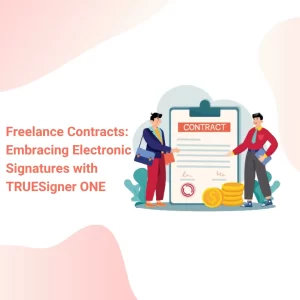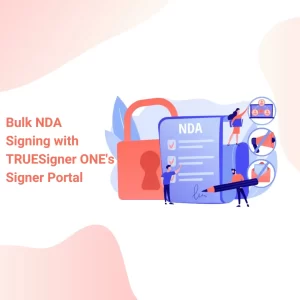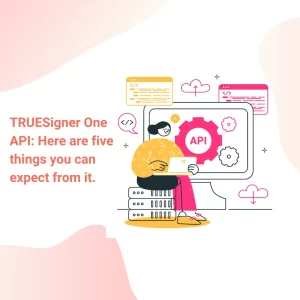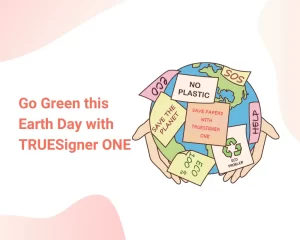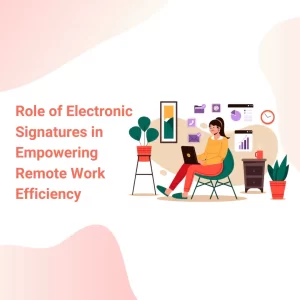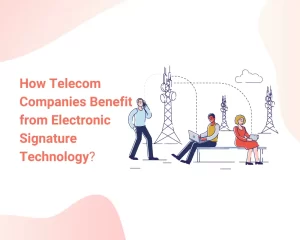Amidst the ubiquitous impact of digital innovations, the unstoppable transition from traditional paper-based procedures to digital solutions is becoming more and more evident. Even with this progress, widespread misunderstandings about electronic signatures continue to hinder their widespread adoption. This blog aims to debunk common misconceptions and provide information on the security, legality, and usability of eSignature adoption in a variety of businesses. By dispelling these myths, it hopes to open the door for a more knowledgeable and certain acceptance of electronic signatures, enabling their smooth integration into contemporary business procedures.
Myth #1: E-signatures are not legally acceptable

There is a common myth that says electronic signatures are not legally recognized. Several nations have passed legislation acknowledging the legality of electronic signatures against popular perception. This recognition is demonstrated by the United States’ adoption of the Uniform Electronic Transactions Act (UETA) and the Electronic Signatures in Global and National Commerce Act (ESIGN). In India, we have IT ACT 2000. These rules bolster the legitimacy and acceptability of digital signatures in the legal system by establishing legal parity between them and their conventional pen-and-paper counterparts.
Myth #2: You can’t prove the identity of who signed the document
On the other hand, electronic signature systems frequently include robust identity verification procedures. Advanced authentication techniques, such as multi-factor authentication and geo-video verification, guarantee that the signer on the document is who they say they are.
Myth #3: E-signatures are difficult to set up
Compared to traditional paperwork, setting up eSignatures is a streamlined process that is much easier. User-friendly interfaces, such as TRUESigner ONE provided by Truecopy, help users set up their accounts quickly and easily.
Myth #4: E-Signature platforms require significant technical expertise
Contrary to popular belief, you don’t need to be a tech expert to use electronic signature software. Most platforms are designed with ease of use in mind; they have simple interfaces that need little technical knowledge. Electronic signature technology emphasises accessibility and ease of use, catering to users with varying levels of technological ability, whether for small businesses or huge corporations. This debunks the myth that using electronic signatures requires a strong technical background, making this game-changing technology accessible to users of all sizes and abilities.
Myth #5: It’s hard to manage multiple signatures
Although managing several signatures is sometimes a logistical nightmare, electronic signature providers make the process easier. Monitoring several signatures becomes effective and structured with tools like centralized document management, tracking, and automated reminders. The ability of many stakeholders to sign a document from different locations and time zones is one way e-signature technologies improve collaboration.
Myth #6: E-signatures are too expensive

The pricing fallacy surrounding electronic signatures can occasionally be traced back to the outdated belief that digital solutions are inherently expensive. Electronic signature software saves money and time by removing the need for physical storage, expediting processes, and using less paper. TRUESigner ONE comes with scalable pricing to satisfy the diverse needs of organizations.
Myth #7: Electronic signatures are not stored securely
Security issues are a common barrier to the use of electronic signatures. However, reliable eSignature providers like Truecopy ensure the confidentiality and integrity of electronically signed documents by using state-of-the-art encryption techniques and adhering to industry-standard security rules. To protect sensitive information throughout the signing process, Truecopy credentials, for instance, give top priority to the strongest security measures.
Myth #8: Not all legal documents can be electronically signed
A growing number of documents can be signed electronically. Contracts, agreements, and HR letters are just a few legal documents for which many jurisdictions accept electronic signatures as genuine. However, keeping up with local laws and regulations is important, and selecting an e-signature solution that conforms to applicable requirements is important.
Summing up:
Busting the myths about eSignature technology reveals a technological solution that is not only legally valid but also safe, useful, and affordable. Thanks to industry pioneers like Truecopy Credentials, electronic signature solutions have advanced rapidly, allowing businesses to change. This solution streamlines processes, making it simpler to embrace the digital future confidently. It’s time to dispel enduring myths and capitalize on the advantages that come with using electronic signatures. As the digital world evolves, businesses seeking to increase operational effectiveness, security, and competitiveness must fully embrace and employ eSignatures.

